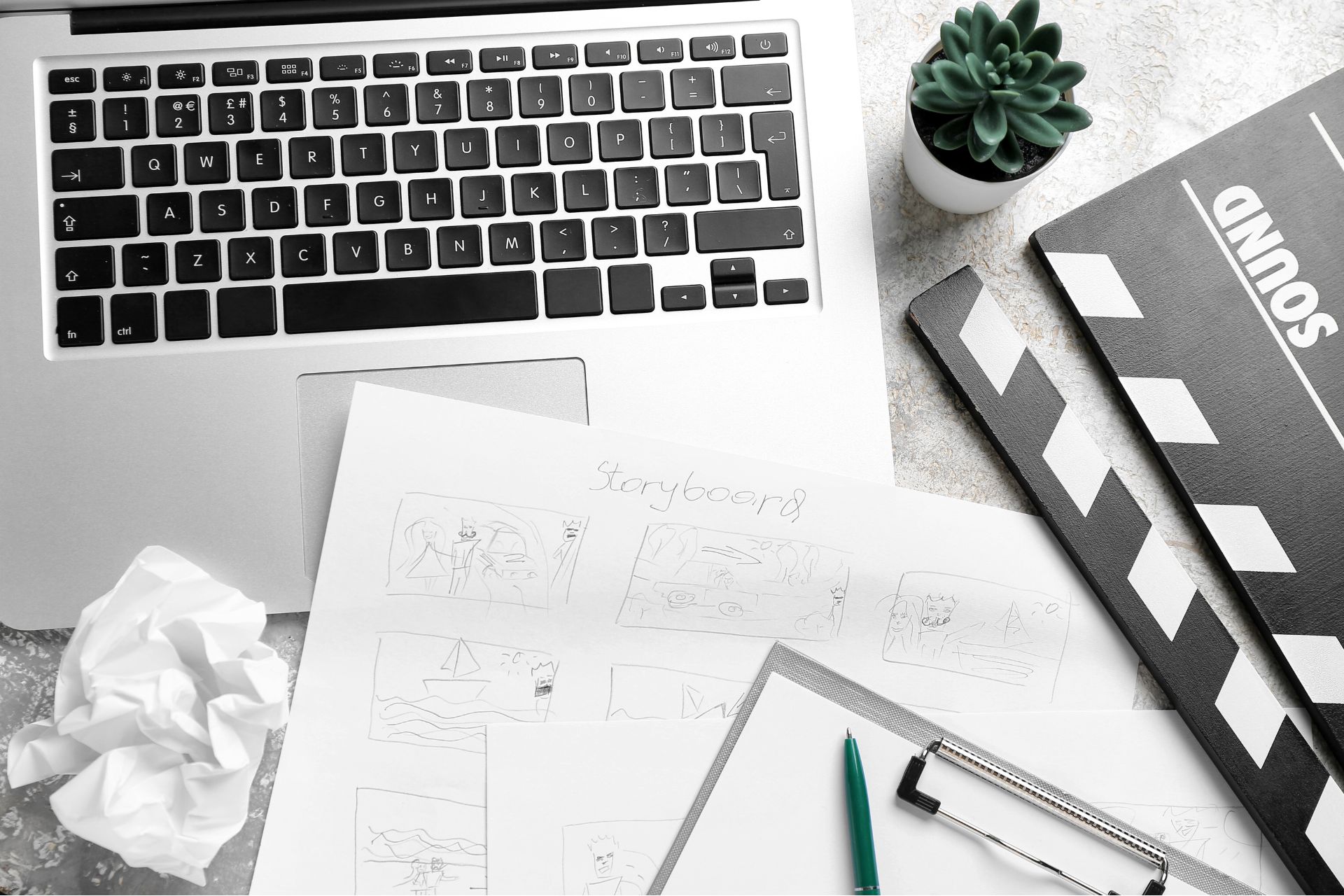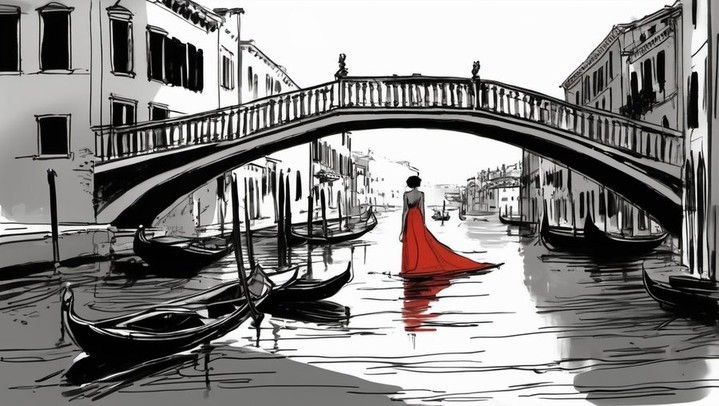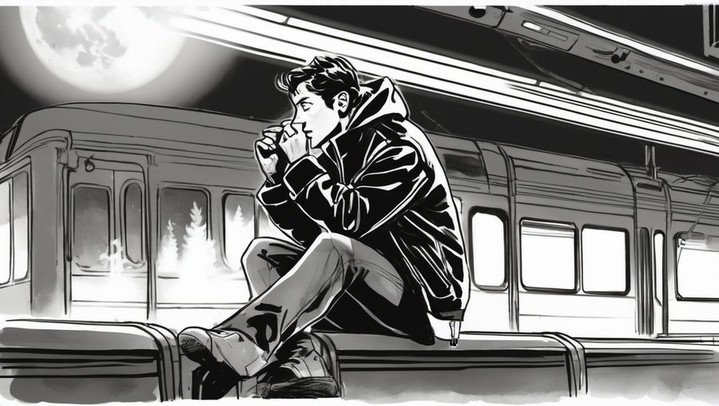Comparing traditional and Digital generated storyboarding methods

In my journey as a writer and filmmaker, I’ve witnessed firsthand the transformative impact of digital storyboarding on the creative process. I remember the days of meticulously sketching each frame by hand, feeling a tangible connection to my work with every pencil stroke. However, the advent of digital tools has revolutionized how we approach storyboarding, offering unprecedented flexibility and efficiency. What is a storyboard in film production? It’s a visual representation of a film’s narrative, traditionally created with hand-drawn sketches or digitally produced frames. This article dives deep into the nuances of traditional versus digital storyboarding, drawing from personal experiences and industry insights to explore their respective benefits and challenges.
Traditional Storyboarding:
The Artistry of Visual Storytelling. In the realm of visual storytelling, traditional storyboarding stands as a testament to the power of the artist's hand. It is a craft honed over generations, where the simplicity of pencil and paper belies the depth of skill and imagination required to bring a story to life. For the dedicated artist, the act of traditional storyboarding is a deeply personal and immersive experience, one that allows them to pour their heart and soul into every carefully crafted frame.
The Timeless Appeal of the Artist's Touch
At the core of traditional storyboarding lies the unparalleled artistry of the human hand. There is an inherent beauty and authenticity in the imperfections of a hand-drawn sketch, a quality that cannot be replicated by even the most advanced digital storyboard tools. The slight variations in line weight, the organic flow of the composition, and the tangible texture of the paper all contribute to the unique charm and character of a traditionally storyboarded scene.
For those wondering how to make a storyboard for a short film, embracing traditional methods can offer a level of spontaneity and intuitive expression that is often lost in the digital realm. The artist's hand becomes an extension of their creative vision, translating the ephemeral flashes of inspiration into concrete visual form. This direct, unfiltered connection between the artist's imagination and the page is what gives traditional storyboarding its enduring appeal.
Navigating the Challenges of a Changing Landscape

While the artistic merits of traditional storyboarding are undeniable, it is important to acknowledge the challenges it faces in an increasingly digital world. The time-consuming nature of manual revisions and the limitations in remote collaboration can be significant hurdles for artists working on fast-paced, globally distributed projects. In an industry where efficiency and speed are often prioritized, the traditional approach may struggle to keep pace with the demands of modern production pipelines.
Digital Storyboarding
Digital storyboarding is a realm that stretches creativity to its limits. This new storyboard method revolutionizes an artist's perception and communication of stories by using technology. With this software, specialized on their own hands, developers can create detailed frames and lively progressions like no other.
Approaches and Advantages
Enhanced creativity:
The digital canvas becomes a playground for experimentation, where ideas can be molded, refined, and brought to life with the click of a button. Digital storyboarding tools offer features such as layers, 3D models, and animation previews, which enhance the creative possibilities for storytellers. Digital storyboarding tools, such as layers, 3D models, and animation previews, elevate the storytelling process to new heights. But perhaps the most significant advantage of this storyboard method lies in its ability to foster seamless collaboration.
One of the most striking advantages of digital storyboarding is the ability to iterate rapidly on a scene. For instance, during the development of my last short film, we actually used Blender to create multiple versions of a crucial staircase sequence. We could easily tweak the camera angles, adjust the timing, and experiment with different lighting setups, all within a few clicks. This process would have taken days, if not weeks, with traditional hand-drawn storyboards. The immediate feedback loop and the ability to see changes in real-time significantly enhanced our creative decision-making. It certainly wasn't pretty, but it helped us easily understand what we were going to do in a simpler way we all understood. For those looking for film storyboard examples, digital tools provide numerous instances where the flexibility and speed of iteration can dramatically improve the production process.
Seamless collaboration:
Cloud-based platforms allow teams to work together in real-time, regardless of their geographical location. Ideas can be shared, feedback can be given, and revisions can be made instantaneously, streamlining the creative workflow and ensuring that everyone is on the same page. This collaborative aspect is a game-changer in the world of visual storytelling, enabling creators to bring their collective vision to fruition with unprecedented efficiency.
Limitation
However, as with any technological advancement, digital storyboards come with their own set of challenges.
Steep learning curve:
The learning curve and reliance on digital devices can be daunting for some, particularly when learning how to create a digital storyboard.
Potential for technical disruptions:
The potential for technical issues can disrupt the creative flow. In the realm of creating a storyboard film, software crashes and connectivity issues can pose significant challenges. However, for those willing to embrace the digital age, the rewards are immeasurable. Digital tools offer unparalleled flexibility, the ability to make instantaneous updates, and seamless collaboration, greatly enhancing the process of crafting a storyboard film.
The Use of AI in Digital Storyboarding

As digital storyboarding continues to evolve, the integration of artificial intelligence (AI) has become an increasingly prominent topic of discussion. AI-powered tools offer the potential to streamline the storyboarding process, enabling creators to generate and manipulate visual assets with unprecedented speed and efficiency. For instance, using a film storyboard template, AI can quickly populate scenes with pre-designed elements, allowing artists to focus more on refining and customizing the visual narrative. However, the use of AI in storyboarding also raises important questions about the role of human creativity and the limitations of automated systems.
Enhancing Efficiency and Expanding Creative Possibilities
One of the most significant advantages of AI in digital storyboarding is its ability to automate time-consuming tasks and provide creators with a wider range of visual options. AI algorithms can quickly generate variations of characters, backgrounds, and objects based on specified parameters, allowing artists to explore multiple design possibilities in a fraction of the time it would take to create them manually. This can be particularly useful in the early stages of the storyboarding process, where creators are still experimenting with different visual styles and concepts.
Moreover, AI-assisted tools can help bridge the gap between the artist's vision and their technical skills. For example, an AI-powered system could automatically suggest color palettes, lighting setups, or camera angles based on the emotional tone or narrative context of a scene. This can empower creators to focus on the storytelling aspects of their work, rather than getting bogged down in the technical details of illustration or animation.
Challenges and Ethical Considerations
While AI in digital storyboarding offers exciting possibilities, it also brings several challenges and ethical considerations. One major concern is the risk of homogenization. AI algorithms, often trained on existing datasets, may inadvertently reproduce stereotypes or limit the diversity of creative output. Artists must be vigilant and actively inject their own unique perspectives and experiences into the storyboarding process to counteract these limitations.
Another significant issue is authorship and intellectual property rights. As AI systems become more capable of generating original content, determining who owns the rights to the resulting work becomes complex. This has sparked ongoing debates about the legal status of AI-generated art and whether it can truly be considered a product of human creativity.
Furthermore, the use of AI raises questions about the impact on the role of human artists. What is a storyboard in film? Traditionally, the process was straightforward: the author dictated the vision to the artist, who then translated it visually. With AI, this dynamic changes. If AI starts to create story sequences, we must ask: whose vision is it now? The process may evolve into a two-way inspiration, where AI suggests scenarios, camera angles, and more, which then further inspire the final outcome. This interplay can enrich the creative process but also requires us to rethink the traditional roles of authorship and artistic input in storytelling.
Cost-Effectiveness Comparison
Now, let's talk about the bottom line. When it comes to choosing between traditional and digital storyboarding, the decision often boils down to cost-effectiveness.

Traditional Storyboarding
As a creator, you need to weigh the financial implications of each storyboard method against the unique demands of your project. For smaller, independent endeavors, the low barrier to entry of traditional storyboarding can be a compelling factor. All you need is a pencil, some paper, and a spark of creativity to bring your vision to life. There's a beautiful simplicity in this approach, one that allows you to focus on the essence of your story without getting bogged down in technical complexities.
Digital Storyboarding
As projects grow in scale and ambition, the long-term benefits of digital storyboarding become apparent. Reusing assets, making instantaneous updates, and collaborating seamlessly with remote teams can significantly save time and costs. However, it is crucial to consider the initial investment in software, hardware, and training for digital storyboarding. The upfront investment in software and hardware may seem daunting at first, but the efficiencies gained can more than justify the expense.
Ultimately, the choice between traditional and digital storyboarding is personal, shaped by your creative process, available resources, and project demands. Understanding the strengths and limitations of each approach allows you to make an informed decision for both creative and financial success.
Hybrid Storyboarding
Combining Digital and Traditional Methods In the ever-evolving world of visual storytelling, creators are discovering the power of combining digital and traditional storyboarding methods to optimize their creative process. By leveraging the strengths of both approaches, artists can unlock new levels of efficiency, collaboration, and artistic expression.
Digital storyboarding has revolutionized the way creators iterate and develop their ideas. With the ability to quickly manipulate and refine concepts using digital storyboard tools and templates, artists can explore a wide range of possibilities in a fraction of the time it would take with traditional methods. This rapid iteration process allows for a more fluid and dynamic unfolding of the creative vision, enabling storytellers to test and refine their ideas until they reach their desired outcome.
Once the digital storyboard has been refined and the creative direction is clear, traditional storyboarding techniques can be employed to add a layer of artistic depth and nuance to the final product. By translating the digital layouts into hand-drawn sketches, artists can infuse their work with a unique personal touch and capture the subtle details that bring characters and scenes to life.
This hybrid approach to storyboarding offers numerous benefits for creators. It allows for a seamless integration of technology and traditional artistry, catering to the diverse skills and preferences of team members. By starting with digital tools, collaborators can easily share, comment on, and revise the storyboard remotely, streamlining the feedback process and ensuring everyone is aligned on the creative vision.
Moreover, the combination of digital and traditional methods can serve as a bridge between generations of creators. Younger artists who have grown up with digital tools can learn valuable techniques from experienced professionals well-versed in traditional storyboarding. Conversely, veteran creators can benefit from the efficiency and flexibility offered by digital platforms, enhancing their existing skill sets.
As the lines between digital and traditional storyboarding continue to blur, it's clear that a hybrid approach offers the best of both worlds. For those learning how to storyboard a film, this hybrid method allows for the integration of modern technology with the timeless artistry of hand-drawn sketches. By embracing the power of technology while preserving the artistry of hand-drawn sketches, creators can push the boundaries of visual storytelling and bring their most ambitious visions to life. The future of storyboarding lies in blending digital and traditional methods, empowering artists to tell more resonant stories.
Final Thoughts
The choice between traditional and digital storyboarding depends on your personal creative process, available resources, and project demands. By understanding each storyboard method's strengths and limitations, you can make decisions that not only foster creativity but also align with your environmental responsibilities.
In storytelling, the methods and tools we choose significantly shape our narratives and their impact. Whether through traditional sketches or digital storyboard platforms, each storyboard is a step toward crafting compelling stories that resonate with audiences. If you're wondering how to storyboard a short film, the process involves considering both traditional and digital approaches to determine which best suits your project's needs. Embrace experimentation, remain open to new possibilities, and continue to push the boundaries of visual storytelling. The future of this art form is vibrant and boundless, and I look forward to seeing the incredible stories you will tell. As technology continues to advance, it will be exciting to see how creators adapt and leverage new tools to craft compelling narratives that captivate audiences.
Footer

Empowering Your Vision. One Frame at a Time.
© 2024 TaleTech Studios AG. All rights reserved.